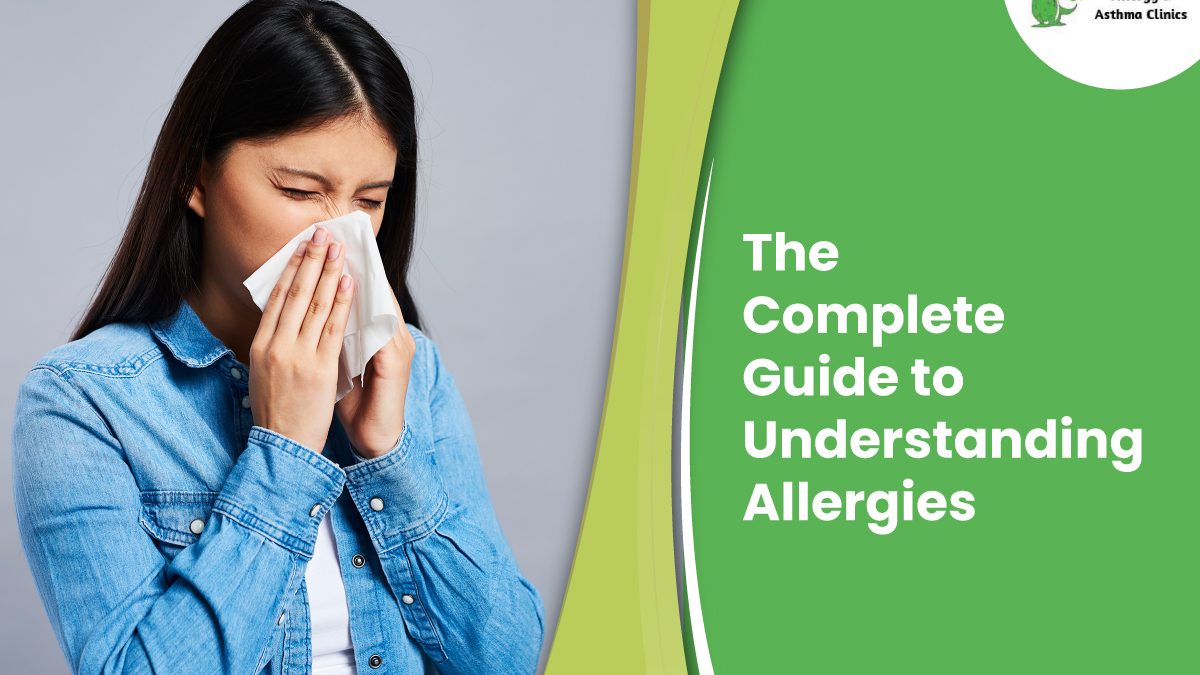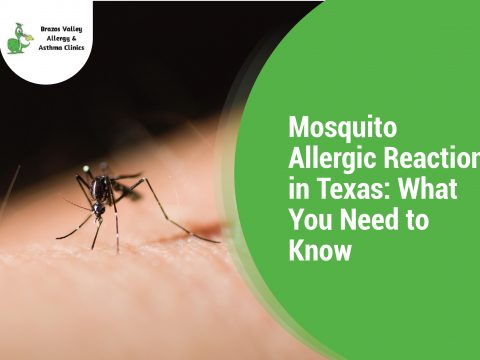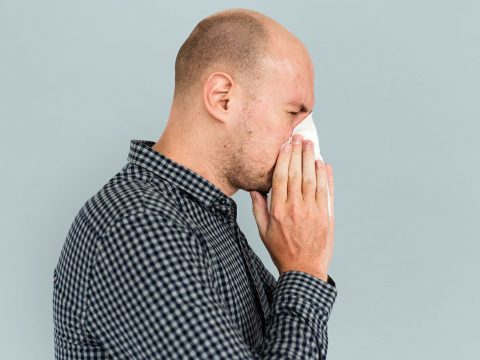- 979-485-9287
- office@bvallergy.com
-
 979-251-7804
979-251-7804
The Complete Guide to Understanding Allergies

Is Allergen Immunotherapy A Long-Term Solution for Allergy Relief?
January 26, 2023
Sinus Infection: Causes, Symptoms, and Treatments
February 17, 2023Over 60 million individuals in the United States suffer from allergies each year. The staggering number of rising allergy cases indicates how common allergies are. With that in mind, it only shows that understanding the facts behind allergies plays a crucial role in managing the condition.
Unfortunately, allergies are incurable. Moreover, it is almost impossible to prevent an allergic reaction. However, allergy symptoms are highly treatable and manageable. All you need to do is learn everything about them. This article is all about allergies. We’ll discuss its definition, common signs of allergies, causes, and ideal treatments.
So, without further delays, let’s follow the complete guide to understanding allergies.
What Are Allergic Reactions?
Allergic reactions occur when your body’s natural defenses (immune system) negatively react to harmless proteins via accidental consumption or exposure. Some examples of these substances are allergens from food, dust mites, or pollen.
This is how your immune system will react when exposed to these substances:
- Releases chemicals called histamines.
- Histamines will try to eliminate the harmless substances, typically resulting in an allergic reaction.
Every allergic reaction is unique to the individual experiencing them. Some cases are mild and usually go away without medical intervention. On the other hand, others have a more severe reaction that could potentially be life-threatening.
This medical condition is called anaphylaxis – a severe allergic reaction that could be fatal if left untreated. We’ll have a separate section about anaphylaxis later in this article.
How Allergies Enter the Body
Here are the four ways how allergies enter your body:
- Inhalation – breathing in an allergen
- Skin contact – touching an allergen
- Ingestion – eating an allergen
- Circulatory system – entering the bloodstream
The Common Signs and Symptoms of Allergies
Allergy symptoms differ from one case to another. However, most types of allergy symptoms are similar to each other. Below is a list of allergy symptoms observed by people with allergies worldwide.
- Allergic conjunctivitis or eye allergies (Itchy, red, watery, or swollen eyes)
- Angioedema (Facial swelling, swollen lips, tongue)
- Allergic contact dermatitis, eczema (Skin rashes)
- Allergic rhinitis (Sneezing and itchy, stuffy, or runny nose)
- A severe allergic reaction (Anaphylaxis)
- Itchy around the nose, mouth, eyes, or roof of the mouth
- Cough
- Headache
- Asthma attack
- Itchy skin
- Hives
- Shortness of breath
- Nausea and vomiting
- Wheezing
Allergy symptoms often lead to complications if left untreated. Below are the typical complications.
- Headache
- Decreased sense of smell
- Sore throat
- Sinus infections (also called sinusitis)
- Ear infections
- Postnasal drip
- Puffiness or dark circles under the eyes
- Nasal congestion
- Fatigue
It is crucial to control your allergies during their early stages. Complications could lead to a decline in your quality of life.
Common Allergy Causes
The common causes that often trigger your allergies are the allergens in the environment. Here are some common allergens:
1. Pollen
Pollen is one of the most common causes of allergies worldwide. These tiny substances come from plants, grasses, weeds, and trees. Different seasons bring a multitude of pollen during specific times of the year. Moreover, pollens easily float in the air and can travel thousands of miles undetected by the naked eye. You should learn your local pollen count if you have allergies to minimize the risks of accidental exposure.
2. Food
Food allergen is one of the most difficult allergens to avoid. It is second only to pollen in terms of accidental consumption. Most individuals accidentally consume food allergies without knowing. Studies say that approximately 8% of children have food allergies. Moreover, adults also develop food allergies. Reports say that 10% of adults suffer from food allergies.
Examples of common food allergies:
- Eggs
- Sesame seeds
- Milk
- Crustaceans and mollusks
- Peanuts
- Soy
- Fish
- Mustard
3. Mold
Unfortunately, molds are present in almost every household worldwide. These microscopic organisms thrive in the cold and damp areas of the house. What’s more, mold spores trigger both allergies and asthma. Keeping your house clean reduces the risk of mold allergy.
4. Animal Dander (Pets)
It is widely believed that people with allergies should avoid pets due to their fur. However, it is not entirely true. Instead, the real cause of your allergic reaction is your pet’s dander, urine, or saliva. Dry animal skin flakes linger for an extended period in the air and often rest on furniture, rugs, or curtains.
5. Dust Mites
A dust mite is a tiny critter invisible to the naked eye that is closely related to spiders and ticks. Moreover, they typically reside and multiply in pillowcases, blankets, and carpets. Exposure to their carcasses and droppings often leads to an allergic reaction.
6. Insect Stings and Bites
Most insect stings and bites cause a mild allergic reaction and are a minor annoyance for some people. However, sometimes, a severe allergic reaction like anaphylaxis can occur.
Common insects that can cause an allergic reaction:
- Wasps
- Bees
- Fire ants
- Yellowjackets
- Hornets
7. Medications
Some medicinal drugs trigger an allergic reaction. In addition, drug allergy symptoms can occur within minutes or hours of consumption. The most common drugs that cause allergies include antibiotics, non-steroidal anti-inflammatory drugs, insulin, aspirin, and chemotherapy. Studies say that 10% of people worldwide are allergic to penicillin.
8. Latex
Many medical products contain latex. Some examples are surgical gloves, stethoscopes, catheters, and many more. Health workers and patients with frequent exposure or contact with these items develop latex allergies.
What is Anaphylaxis?
Anaphylaxis is an allergic reaction that could be fatal if left untreated. The symptoms of anaphylaxis are often severe and unrelenting. It is crucial to act fast to save someone from an anaphylactic shock.
Symptoms
- Collapsing or sudden loss of consciousness
- Confusion and anxiety
- Lightheadedness or fainting spells
- Palpitations
- Clammy skin
- Breathing difficulties
- Wheezing
- A sudden drop in blood pressure
EpiPen works with anaphylaxis. However, only trained individuals should administer them. The best way to help someone suffering from anaphylaxis is by calling 911 or going to the emergency room ASAP.
Allergy Treatment
Medications are efficient in treating allergies. These anti-allergy drugs are safe and widely available from your local pharmacy. Here are some examples:
Antihistamines
These potent anti-allergy medications work by blocking your immune system’s histamine production. They are fast-acting and highly effective. Antihistamines work well against hay fever, hives, insect bites or stings, ragweed allergy, and swollen eye allergies (conjunctivitis).
Decongestants
Decongestants are your best bet if your allergy symptoms include a blocked or runny nose. They shrink swollen blood vessels to provide relief. These medications are ideal for treating a clogged or runny nose from grass allergy.
Anti-allergy Topicals
Topical creams or lotions for allergies are ideal for relieving allergy symptoms with fewer side effects. If you are wary about taking oral medications, topicals are your best option. These medications provide fast relief from dust allergy symptoms.
Additional Tips
Allergy treatment does not stop with medications. You can also try the steps below for better outcomes.
- Avoid triggers
- Keep your house clean
- Minimize contact with pets
- Use air purifiers and dehumidifiers
- Get tested for allergies
- Consult an allergist
Know Your Allergies and Stay One Step Ahead
Allergies are manageable if you have the proper knowledge. Know your allergies and stay one step ahead. If you are looking for an allergist in south central Texas. Our board-certified allergist Dr. Paul Jantzi offers safe and efficient allergy treatments in Texas.
You can reach him at Brazos Valley Allergy & Asthma Clinics for professional allergy, asthma, and immunology services.




